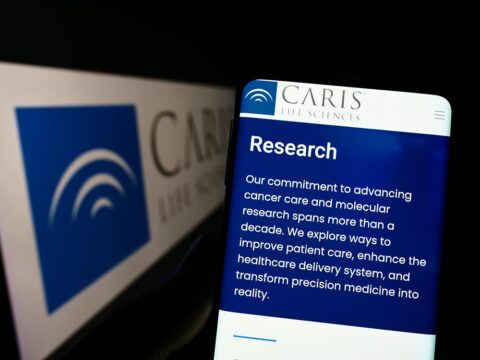Advertisment
Report of the Bayer satellite symposium EAHP 2013
by Christine Clark – The Bayer satellite symposium, ‘The new oral anticoagulants: mechanisms, evidence and day-to-day decisions’, was held at the European Association of Hospital Pharmacists Congress in Milan on 21st March 2012
Professor Reinhold Kreuz
Traditional vitamin K antagonists are difficult to use in practice for a number of reasons, according to Reinhold Kreuz (Acting Director, Institute for Clinical Pharmacology and Toxicology, Charité – Universitätsmedizin, Berlin, Germany.) Although they have the advantage of once-daily oral administration, they have a slow onset and offset of action and suffer from variable metabolism as a result of genetic polymorphisms (in metabolising enzymes) andinteractions. Furthermore, they have a poor dose-response relationship and unpredictable effects that make monitoring of international normalised ratio (INR) and dosage adjustment obligatory.
The new oral anticoagulants (NOACs) – rivaroxaban, apixaban and edoxaban are inhibitors of Factor Xa and dabigatran is an inhibitor of Factor IIa (thrombin). These drugs bind directly and reversibly to their targets and there is a good relationship between dose and plasma level. “They are fundamentally different from the vitamin K antagonists (VKAs)”, said Professor Kreuz
Absorption of the NOACs is rapid. Dabigatran, a prodrug that is rapidly converted ot the active compound, has a bioavailability of about 6% whereas the bioavailability for the Factor Xa inhibitors is higher, and exceeds 80% for rivaroxaban.
All the NOACs are substrates of cytochrome p450 3A4 (CYP3A4) and/or P-glycoprotein (P-Gp) and are therefore candidates for drug interactions. Drugs that are strong inhibitors of both CYP3A4 and P-Gp, such as the azoles and protease inhibitors, are contra-indicated with Factor Xa inhibitors; concomitant administration raises the levels of the Factor Xa inhibitor. Dabigatran is a substrate of P-Gp but not of CYP3A4. Concomitant administration of verapamil and amiodarone which are P-Gp inhibitors can influence the bioavailability of dabigatran.
Renal clearance for all the Factor Xa inhibitors is about 25-30% – a sharp contrast with dabigatran – 95% of which is eliminated by the kidneys. Dosage reduction is required for dabigatran when the creatinine clearance is 30-50ml/min
Current and future regimens
Professor Giancarlo Agnelli
There are currently four indications for the NOACs (rivaroxaban, apixaban and dabigatran); they are prevention of venous thromboembolism (VTE) in major orthopaedic surgery and in internal medicine, prevention of stroke in atrial fibrillation, treatment of VTE and secondary prevention of acute coronary syndrome. Giancarlo Agnelli (Professor of Internal Medicine, University of Perugia, Italy) reviewed the published data for these indications.
VTE prevention
The prevention of VTE in major orthopaedic surgery (total knee replacement and total hip replacement) has been examined in three studies using dabigatran, RENOVATE, REMODEL and REMOBILISE, all of which used enoxaparin as the comparator. All demonstrated non-inferiority of dabigatran and a good safety profile. The four RECORD studies of rivaroxaban in hip and knee replacement all demonstrated superiority over enoxaparin. One study showed a minor increase in bleeding although none of the studies reported a significant increase in bleeding, said Professor Agnelli.
The effects of apixaban in major orthopaedic surgery were examined in the three ADVANCE studies. Two of these showed superiority over enoxaparin and a good safety profile.
The MAGELLAN study addressed the prevention of VTE in medical patients. The results showed that 30 days’ prophylaxis with rivaroxaban was similar in efficacy to seven-10 days treatment with enoxaparin. There was an excess of bleeding in patients treated with rivaroxaban in the first phase. The ADOPT study, which compared apixaban and enoxaparin in a similar design to MAGELLAN showed the same increase in efficacy at the cost of a small increase in bleeding. Overall the results in this indication were less dramatic than those seen in major orthopaedic surgery but the reason for this was unclear, commented Professor Agnelli.
Stroke prevention in atrial fibrillation
The prevention of stroke in patients with atrial fibrillation (AF) was the objective of the RE-LY study that compared two doses of dabigatran with warfarin. The higher dose of dabigatran was more effective than warfarin while the lower dose was no different. There was also a reduction in intracranial bleeding in the dabigatran groups. This was the first clinical demonstration that it was possible to replace warfarin for this indication, said Professor Agnelli. A trial of rivaroxaban in AF (ROCKET AF) also showed non-inferiority and a reduction in intracranial bleeding.
The AVERROES study compared apixaban and aspirin in AF patients who could not be given warfarin. Apixaban was more effective than aspirin and there was no increase in bleeding. The ARISTOTLE (apixaban vs warfarin in AF) trial also showed non-inferiority.
VTE treatment
The RECOVER 1 trial compared warfarin with dabigatran in the treatment of VTE, both deep vein thrombosis (DVT) and PE pulmonary embolism (PE). The results showed that dabigatran was non-inferior and had a good profile regarding bleeding.
The EINSTEIN trial compared rivaroxaban with enoxaparin plus warfarin but, unlike the RECOVER trial, no low molecular weight heparin was given before the rivaroxaban was started. This trial tested the hypothesis that a single agent could be given from the outset for treatment of DVT. Non-inferiority was established and there was a reduction in major bleeding. Publication of a further study examining the effect of rivaroxaban in PE is awaited, said Professor Agnelli.
Secondary prevention of acute coronary syndrome
The ATLAS-2 study compared rivaroxaban with placebo in addition to standard treatment (e.g. aspirin, clopidogrel) for secondary prevention of acute coronary syndrome (ACS). There was a risk reduction of 16% (absolute risk reduction (ARR) of 1.7%). This corresponds to an NNT (number needed to treat) of 56.
Health economics of the new oral anticoagulants
Gianluca Furneri
The economic burden of thromboembolic diseases is considerable, Gianluca Furneri (Independent Health Economics and Pharmaceutical Market Access Consultant, Charta Foundation, Milan, Italy) told the audience. In the UK it is estimated that there are 32,000 deaths each year from VTE in hospitalised patients. The estimated cost of DVT in Europe is €3,500 and for PE about €6,000. Stroke is the third leading cause of death in Italy with about 200,000 cases annually. The EcLIPSE (Economic Longitudinal Incidence-based Project for Stroke Evaluation) study showed that the mean social costs in the first six months alone were €12,000.
One analysis ofthe use of rivaroxaban, dabigatran and enoxaparin in major orthopaedic surgery showed that costs are broadly similar. An analysis by the National Institute for Health and Clinical Excellence (NICE) in the UK concluded that rivaroxaban reduced costs and improved benefits. In Italy stroke prevention treatment in AF patients is poor and many are not treated at all. Treatment of 1000 non-treated AF patients for two years would save €1.16million (in stroke treatment avoided) at a cost of €1.46million – an 80% return on investment. Other factors to be taken into account are that the costs of NOACs might fall in future and treatment of AF patients who are not candidates for warfarin would be possible.





